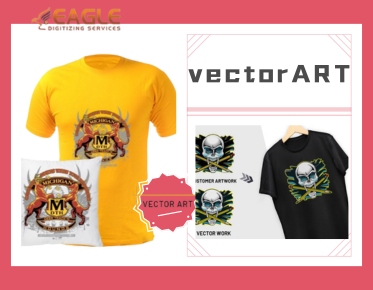5 Common Mistakes to Avoid with a Multi-Position Embroidery Hoop
Understanding the Potential Pitfalls of Multi-Position Embroidery Hoops
Embroidery is an art form that brings creativity to life with each stitch, but it’s a craft that requires attention to detail and precision, especially when using a multi-position embroidery hoop. This tool promises incredible versatility, but without proper mastery, it can lead to frustration and wasted time. Understanding how to properly use a multi-position hoop is essential to achieving flawless designs and making the most of its potential. If this post spurred your interest and you want to find out more about Embroidery Digitizing, please feel free to contact us.
How overlooking simple steps can lead to frustration and wasted time
Even the most seasoned embroiderers can find themselves in a bind if they overlook the smallest details when working with a multi-position hoop. Skipping simple steps—like securing fabric properly or ensuring correct hoop positioning—can result in frustrating errors. These errors not only affect the quality of your work but can also waste precious time. The key to avoiding these pitfalls is understanding the mechanics of your hoop and the fabric’s behavior under tension. Once you master the tool, you’ll unlock a world of possibilities.
Why mastering the tool is key to achieving flawless designs
A multi-position hoop allows you to create intricate designs that would otherwise be impossible with a standard hoop, but it’s not a tool you can simply pick up and use without practice. Mastery of this tool is necessary to ensure your designs come out as expected. Understanding the finer details—such as the relationship between fabric tension, hoop placement, and design size—can make all the difference. By learning the proper techniques and taking your time with each step, you can eliminate errors and elevate the quality of your embroidery projects.
Mistake #1: Incorrect Hoop Positioning
Why fabric placement matters more than you think
The fabric’s placement in the hoop is not just a casual consideration—it’s a critical factor in the success of your design. Incorrect placement can lead to misalignment, uneven stitching, and distortion of the fabric. Even small shifts can throw off the entire design, making it important to ensure your fabric is centered and positioned correctly in the hoop before you start stitching. A fabric that’s out of place, even by a few millimeters, will affect your final result. This is especially true for intricate or detailed designs where precision is everything. Paying attention to the smallest details here can save time and effort later on, preventing costly mistakes that may require you to start over.
Common errors in positioning and how to fix them
A common mistake when using a multi-position hoop is improper alignment. Whether it's due to a rushed setup or not checking fabric placement thoroughly, slight shifts can easily occur. To fix this, take the time to double-check your fabric’s position before locking it into place. If misalignment is detected during stitching, stop immediately to reposition the fabric. A careful inspection of the positioning before each hoop adjustment can save you from costly rework. Ensure that the fabric is evenly placed, making sure it’s not bunched up or skewed to one side. Sometimes, it helps to pull the fabric taut before locking the hoop to ensure everything is straight and aligned.
The impact of misalignment on your final design
Misalignment doesn’t just affect one small part of the design—it can distort the entire pattern. Whether it’s a symmetrical logo or an intricate floral design, the overall appearance will suffer if parts of the design are stitched off-center. This can lead to uneven lines, gaps, or overlapping stitches. When working with a multi-position hoop, any misalignment will amplify as you move from section to section, making early detection critical. Additionally, some designs may require a specific flow or alignment that, if disrupted, could alter the entire aesthetic. Small mistakes, if not corrected early, may compound and lead to a finish that is far from your intended result.
Mistake #2: Overlooking Fabric Tension
Understanding fabric tension and its effect on stitching quality
Fabric tension plays a huge role in how your embroidery turns out. If the tension is too tight, the fabric can distort or pucker. If it’s too loose, the design can look sloppy with loose stitches. Inconsistent tension across different parts of your design can create a bumpy or uneven appearance that detracts from the quality of your work. Proper fabric tension helps ensure that the stitches sit neatly on the fabric, resulting in a clean and smooth finish. Without consistent tension, even the most meticulously planned designs will appear uneven or rushed, affecting their overall look.
How to avoid puckering, stretching, and fabric distortion
The key to maintaining proper fabric tension is to check and adjust regularly. Before starting, ensure the fabric is taut but not overly stretched. While stitching, make sure that the fabric remains even throughout the entire process. If you notice puckering or stretching, stop and adjust the tension on the hoop or in the machine. Consistent tension across all hoop positions will help you achieve a smooth, polished result. Puckering can also be avoided by selecting the right type of stabilizer for the fabric. Don’t hesitate to stop periodically and check the fabric’s behavior, making any necessary adjustments before continuing.
Tips for maintaining even tension across multiple hoop positions
As you move the fabric between different hoop positions, it’s essential to ensure the tension remains consistent. Before re-hooping, gently press the fabric to check for any slack or tight spots. Use your hands to evenly distribute the tension across the entire area you’ll be stitching. Small adjustments can go a long way in preventing fabric distortion and ensuring a professional finish. If you notice any unevenness in tension, stop and adjust the fabric. Taking a moment to perfect this before continuing with each hoop shift can help prevent errors in the final result.
Mistake #3: Ignoring Hoop Size and Design Compatibility
Choosing the wrong hoop for your design can limit creativity
Not all designs are made for every hoop size. While multi-position hoops offer versatility, using a embroidery hoop that’s too small for your design can cause parts of the pattern to be cut off, while a hoop that’s too large might make it difficult to achieve the level of detail you want. Choosing the right size hoop for the job is crucial for achieving your vision. Too small a hoop can force you to scale back your design or miss out on certain details, while too large a hoop can result in loss of precision, especially when stitching smaller details. Ensuring compatibility between your design and hoop size is key to letting your creativity flow without restrictions.
How to match the right hoop size to your project needs
When selecting a hoop, consider the size and complexity of your design. Large, intricate designs may need more room to fit comfortably in the hoop, while smaller, more detailed patterns may require a tighter fit. Take time to experiment with different hoop sizes to see which one works best for the design you’re working on. It’s essential to ensure the hoop accommodates your design's details without restricting the flow of your stitching. The right hoop will provide just enough space for the design to sit comfortably without cramping or losing detail, ensuring a smooth and cohesive stitching experience.
Signs that your design might be too big or too small for your hoop
If you notice that parts of your design are getting cut off or your hoop is stretched too far, it might be an indication that the hoop is too small for the project. On the other hand, if you’re struggling to get your design to align or appear crisp, the hoop might be too large. To avoid this, always measure your design and compare it with the dimensions of the hoop. If in doubt, go for a slightly larger hoop to allow for repositioning without the risk of cutting off details. However, avoid going too large, as this can lead to issues with precision and overall neatness.
Mistake #4: Failing to Secure Fabric Properly
The importance of fabric stability for smooth stitching
Securing your fabric is one of the most important steps in the embroidery process. If the fabric is not properly secured, it will shift during stitching, leading to uneven results. Whether you’re working with delicate materials or thicker fabrics, your fabric must stay in place throughout the entire process to maintain the quality of the design. Fabric that shifts during stitching can cause the machine to stitch inaccurately, leading to mistakes that can’t be corrected later without starting over. Stability is key to achieving clean lines and a cohesive look throughout the design.
Tips for preventing fabric shifts during embroidery
To prevent the fabric from shifting, always double-check that the fabric is taut and centered before beginning. Use stabilizers or hoop guards for added fabric support. Make sure the fabric is secured on all sides of the hoop to ensure that it stays in place as you move through each hoop position. In addition, use fabric clips or pins in the corners to further secure it, especially for larger designs. The added support will ensure the fabric doesn’t shift during the multi-position process, maintaining the precision of each stitch.
Common mistakes when securing fabric and how to avoid them
A common mistake is not pressing the fabric evenly into the hoop. If only part of the fabric is pressed tightly, the rest may shift during stitching. To avoid this, make sure the entire piece of fabric is taut and positioned properly before starting. Additionally, don’t over-tighten the hoop, as this can distort the fabric. Over-tightening can cause the fabric to stretch or buckle, resulting in a distorted design. A balanced tension is key—tight enough to keep the fabric in place, but not so tight that it affects its integrity.
Mistake #5: Rushing Through Re-hooping Process
Why patience is key to successful multi-position embroidery
The re-hooping process is where many embroiderers rush, hoping to get the design done quickly. But haste makes waste, especially when working with multi-position hoops. If you don’t take your time to properly reposition the fabric, your design will lose alignment and suffer as a result. This process requires careful attention to detail and a steady hand, as each shift in hoop position can affect the overall alignment of the design. Rushing through the process will often lead to misalignment, creating gaps, overlapping stitches, or an uneven pattern that will require significant rework.
How improper re-hooping can lead to misalignment and inconsistent results
Rehooping improperly often results in parts of the design being misaligned. Even slight shifts during re-hooping can create misalignment, leading to uneven designs that fail to meet your expectations. This can be frustrating, as it may require undoing your work and starting over. Without re-hooping carefully, the design may lose its symmetry, especially in intricate or multi-position embroidery projects. Ensuring each reposition is done with precision will help avoid these costly mistakes and maintain the integrity of your work.
Step-by-step guide for re-hooping with precision
When re-hooping, always check the alignment carefully before each new hoop position. Take time to adjust the fabric slightly and ensure it's positioned perfectly before locking the hoop in place. Using a steady hand and taking a moment to double-check each step will lead to a smoother process and more accurate final results. Consider marking the fabric lightly with fabric chalk or using alignment tools to guide your re-hooping process. This ensures consistency and precision, preventing misalignment from occurring in subsequent hoop positions. Taking extra care at this stage ensures a flawless result, with no need for costly corrections later. Eagle Digitizing provides embroidery digitizing and vector graphics services.



